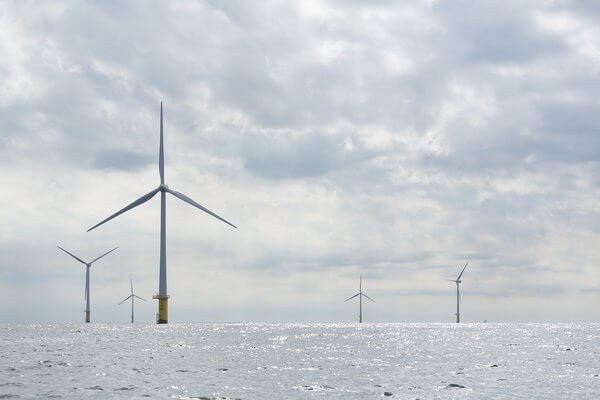News Release from windfair.net
Wind Industry Profile of
New project to drastically reduce shipping emissions
The marine environment is significantly impacted by shipping. Shipping on the world's oceans is responsible for around 2.6 percent of global CO2 emissions. According to the German Federal Environment Agency, these amounted to around 932 million tons of CO2 in 2015. That's more than Germany's total 2019 emissions of 810 million metric tons of CO2 equivalents. And it gets worse: estimates suggest that without political countermeasures, CO2 emissions from maritime transport could rise by as much as 50 to 250 percent (1,407 to 2,345 million metric tons) by 2050 compared to 2012 (938 million metric tons), depending on economic developments. Thus there have been increased efforts to reduce emissions in shipping for several years.
These include the use of renewable and low-carbon fuels, which the German Federal Maritime and Hydrographic Agency (BSH) says should account for between 6 and 9 percent of the fuel mix in international shipping by 2030. Promotion of LNG refueling stations in seaports is also intended to increase the use of LNG as a means of propulsion in shipping.
A major problem remains the supply of electricity to ships when they are in port. Though here, too, there are more and more so-called shore power systems, which ensure that electricity no longer has to be produced by the ships themselves, but is at best charged by clean energy from shore. However, this would require service ships from the maritime industry in particular to make the journey back to the port.
The 'Stillstrom' project takes a different approach. Maersk Supply Service and offshore project developer Ørsted have teamed up to install the world's first full-scale offshore charging station for ships at an offshore wind farm. The facility is expected to be deployed before the end of this year.

Using green electricity for operation directly at the offshore wind farm is the idea behind the charging buoy (Image: Pixbay)
This is an offshore charging station in the form of a buoy that allows ship owners to replace fossil fuels with electricity while vessels are securely moored to the buoy for recharging.
The first of these buoys is expected to be operational in the third quarter of the year, providing overnight power to one of Ørsted's Service Operations Vessels (SOV). Ørsted will be responsible for grid integration of the charging buoy.
The buoy itself is large enough to charge an SOV-sized battery-powered or hybrid-electric vessel. In the future, the same solution will be scaled and adapted to power larger vessels, allowing ships of all sizes to shut down their engines when idling. By substituting green power for fossil fuels, virtually all emissions and noise pollution are eliminated while the buoy is in operation.
“Stillstrom is part of our commitment to solving the energy challenges of tomorrow. By investing in this ocean cleantech space at an early stage, we can help lead the green transition of the maritime industry," says Steen S. Karstensen, CEO of Maersk Supply Service.
To achieve the greatest possible impact, Ørsted is going one step further: any intellectual property created in the development of the buoy for integration into the offshore wind farm will be publicly available to maximize the potential uptake of this carbon-reducing innovation across the offshore wind sector.
“Our vision at Stillstrom is to enable maritime decarbonisation, by providing the infrastructure that will allow vessels to charge from clean energy when idle offshore. The mission is to remove 5.5 million tons of CO2 within five years of commercial rollout, additionally eliminating particulate matter, NOx, and SOx,” says Sebastian Klasterer Toft, Venture Programme Manager at Maersk Supply Service.
- Author:
- Katrin Radtke
- Email:
- press@windfair.net
- Keywords:
- Maersk Supply Service, offshore, developer, wind energy, wind power, Ørsted, decarbonization, maritime, industry, emissions, shipping, CO2, SOV









